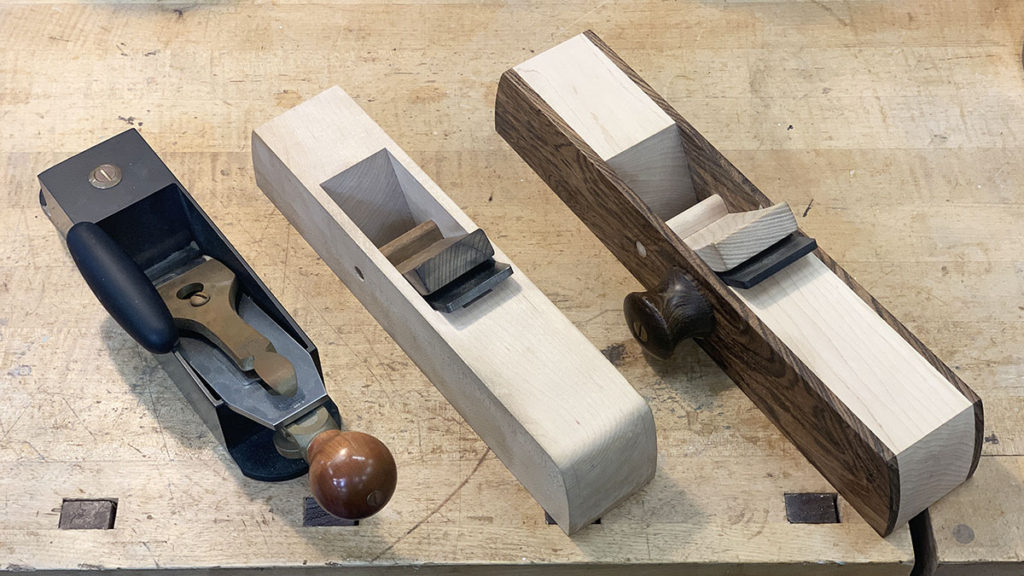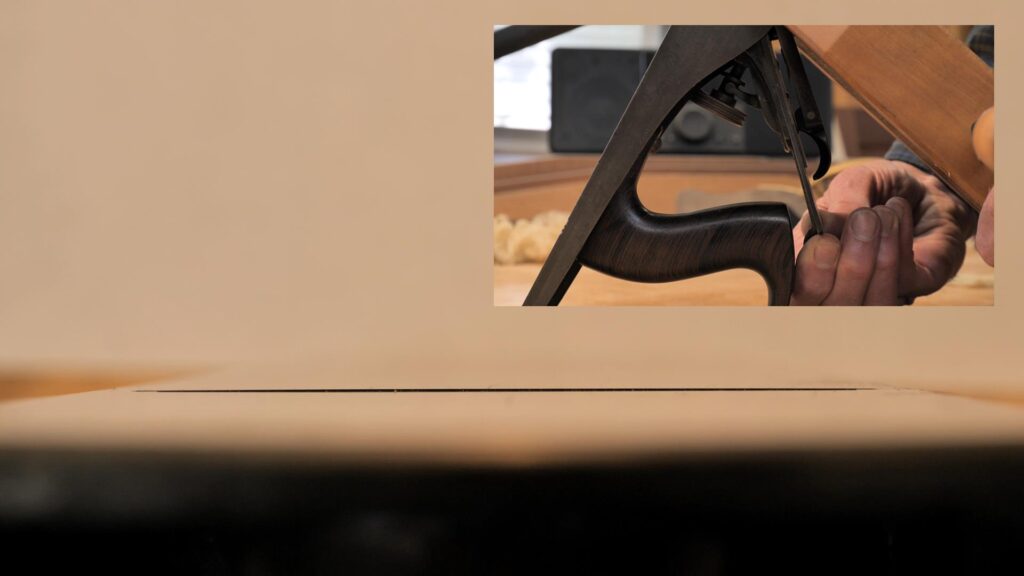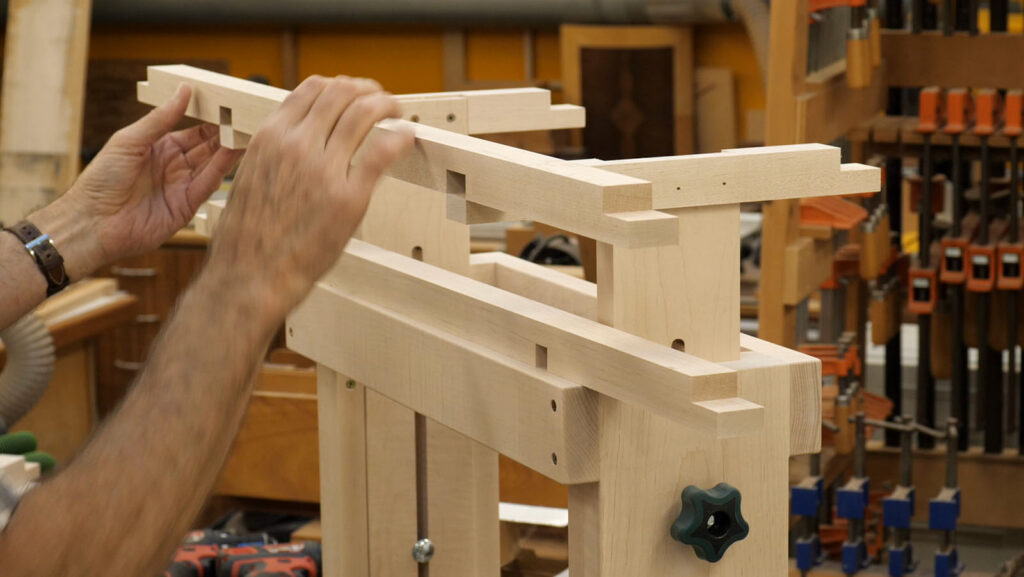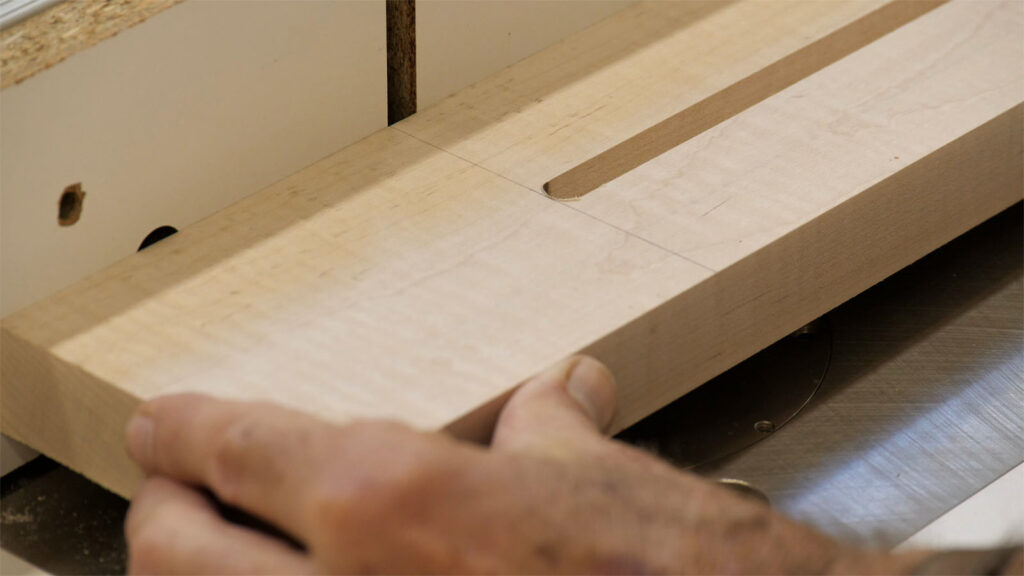Krenov Wood Shooting Plane Part 1
Well, I thought I would be out of town at this time, but plans change… I was supposed to be hiking 105 miles of the Arizona Trail with several friends, but I got Covid in late April. Two weeks ago I felt like I was fully recovered and ready to go, but after a couple of conditioning hikes it became apparent that I wasn’t quite ready for seven consecutive 15-mile days of hiking, so I thought it best to stay put.
There are several options available for shooting planes. The dedicated shooting planes with which I am most familiar are those from Lee Valley/Veritas and Lie-Nielsen. You can also use a bench plane, which I did for many years. A #7 works best, but a #5 or #6 can also work. The primary characteristics of a plane used for shooting are length and weight. Inertia is your friend, so a heavy plane moving quickly works best. Long length lets you get up to speed prior to making the cut.

We are typically cutting end grain when shooting, so a low cutting angle works best. Most shooting planes have at least a 42-degree cutting angle. The Lie-Nielsen #51 is bevel-down and has a traditional bench plane frog with a 45-degree bed. The Veritas is bevel-up and has a 12-degree bed; with a 30-degree blade bevel that yields a 42-degree cutting angle. Of course, you could sharpen the blade with a lower bevel angle, but I don’t think it will stay sharp very long. (Note that on their website they mistakenly state that the 12-degree bed angle with a 25-degree bevel yields a 35-degree cutting angle.) Note too that both planes mount the blade such that the cut is skewed, a great advantage when cutting end grain.
It is relatively easy to make a long and heavy wood shooting plane in the Krenov style. Skewing the blade is another matter, so I didn’t try to incorporate that into the design. I did want to lower the cutting angle, but wood is nowhere near as stiff and strong as cast iron so a bevel-up plane was not possible; there just isn’t enough material under the blade. The question then became how much lower than 45 degrees can we go? I was confident that 40 degrees would work and still yield a relatively large clearance angle (the angle between the blade bevel and the sole of the plane). With a 32-degree bevel (which I typically use), the clearance angle would be 8 degrees. Going lower could be problematic, although it might work. I went with 40 degrees.
My first shooting plane (the middle one in the photo) worked out well, but was a little difficult to hold; it lacked a handle of any kind. It was also on the small side, 12″ long and weighing 5.2 lbs. For reference, my Lie-Nielsen #9 is 11″ long and weighs 5.4 lbs, the Lie-Nielsen #51 Shoot Board Plane is 15″ long, 9+ lbs, and the Veritas Shooting Plane is 16″ long and 7.75 lbs. I wanted something closer to the L-N and Veritas planes.
The rest is pretty straightforward. Watch part one of the build here. Get the rough dimensions of the plane below:




do you have plans and procedures for this?
The procedure is similar to that for the regular Krenov wood plane. You can get that document here:
https://carlstammerjohn.com/2022/04/06/krenov-wood-plane-part-1/
The dimensions for the shooting plane are above.
Wow Carl I hope you feel better